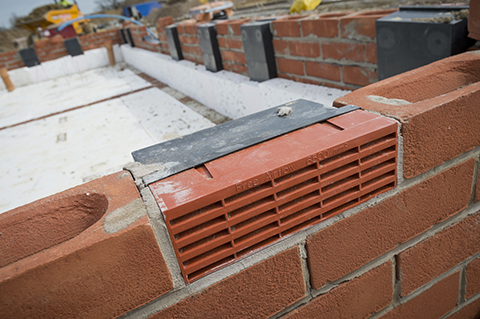Air Brick Covers Homebase
Brush off or wash away any dirt, moss or loose brick and allow to dry do not remove hole covers at corners of Mouse Mesh frame apply a continuous bead of adhesive, about 6mm in diameter, around the back edge of the frame - you will need a glue gun to apply the adhesive - these are readily obtained from DIY shops and stores.
- Air Brick Covers Homebase Garden Furniture
- Air Brick Covers Homebase Outdoor Furniture
- Air Brick Covers Homebase Patio
- Air Brick Covers Homebase Patio Furniture Covers
This page aims to answer common questions about air bricks, what they are, the different types available, where you’ll usually find them and what you can expect to happen if they’re placed in the wrong location or become blocked.
- Air Brick Flood Water Vent Cover, Airbrick Vent Grille Cover, Flood Defence Seal, Flood Protection Seal for Double Air Bricks, Seals Air Bricks Instantly. 4.4 out of 5 stars 16.
- Encourage air flow with air management products. Our range of ducting and ventilation supplies ensures a comfortable environment by feeding cool or warm air to any room. Suitable for domestic and commercial applications.
Not every home will have ventilation air bricks, but those that do will need them for a good reason, so think twice before you block or remove them.
What Are Air Bricks?
Air bricks are made of either cement, plastic or metal and are similar in size and shape to a regular house brick; they have holes in them for ventilation.
They are primarily used to create an airflow underneath a suspended ground-level timber floor that has a void underneath it.
Without adequate ventilation, suspended timber floors will experience a buildup of condensation in the colder months; this can lead to damp problems, rot, insect infestation and the structural collapse of the floor.
Here is a photo of a typical air brick, plastic and metal variants are also popular:
Standard Air Brick
Why Do Some Homeowners Block The Vents?
The air bricks create an airflow underneath the floor; this can lead to drafts which pass through the floorboards into the home.
Due to rising energy prices and a desire by many to reduce heating bills, some people choose to block the vents.
This approach isn’t recommended and can lead to all sorts of problems down the line.
We suggest you leave the vents in place and seal any gaps in the floor joists, so the draft remains under the floor.
Are There Any Situations When It’s Okay to Block Wall Air Brick Vents?
Yes.
If the suspended timber floor has been removed and replaced with a solid concrete floor, the void will also be filled in with concrete, so there’s nothing to ventilate.
In this situation, the air bricks can either be blocked or replaced with regular bricks.
How Many Air Bricks Are Needed?
How many vents you’ll need will depend on the size of the void underneath the floor.
As a general rule of thumb, you should place one air brick every one and a half metres to two metres along the wall.
For large buildings, install the air bricks placed at one and a half metres and consider using larger air bricks.
See this photo of a more significant air brick:
How Far Above the Ground Should They be Placed?
The NHBC (National House Building Council) states that air bricks should ideally be placed at least 75mm above ground level.
If the ground is solid, perhaps tarmac or concrete, they can be placed lower, provided the ground slopes away from the wall.
If the ground is flat or consists of soil, grass or any other soft material, the vents should be placed at least 75mm from ground level. This is to prevent a build-up of dirt, leaves, grasses etc. that may block the vents.
See the two diagrams below:

Options For High Ground Levels
There are occasions when the outside ground level is too high; you have three options:
- Lower the external ground level or;
- Cut out a continuous channel 600mm wide along the length of the wall and to the required depth, also make a provision for drainage or;
- Install periscope air bricks.
The photo below shows a periscope vent (aka telescopic air brick) and the second picture explains how it works:
Air Brick Covers Homebase Garden Furniture
Periscope vent
What Happens if the Wall Vents Become Blocked?
There are several reasons why these wall vents may become blocked:
- The homeowner didn’t know how important they are and filled them with a sealant or cement.
- A previous owner or tradesperson rendered the wall and the vents blocked.
- Soil, leaves, grass and plants etc. have been left to overgrow.
- The outside ground level has been raised, perhaps by placing concrete, tarmac or a patio on top of the existing hard standing (it’s cheaper to overlay than to dig up and replace a patio/driveway so this often happens).
Blocked wall vent Image source
If the vents become blocked or even partially blocked, moisture and gasses from the ground will not be able to escape. During the winter some condensation will form, usually near the external wall.
Condensation in the underfloor void may lead to:
- A damp musty odour in the home.
- Mould and damp patches on the floor and the lower part of the external wall.
- Ruined carpets and floor coverings.
- Insects love wet, damp timber so the floor may become infested.
- Damaged plasterboard, plaster and walls.
- Rot, leading to the failure of the suspended floor.
Below you’ll find a great video from Square Conduct Services Ltd, here you’ll see what happens when vents are blocked and breached:
Can Air Bricks be Used Through Cavity Walls?
Yes.
You can insert wall vent bricks into either a solid wall or through two walls with a cavity between them.
Some brick vents require a tray, while others are clipped together until you reach the required length.
The photo below shows a typical installation through a cavity wall:
Remember: Not Every Home Will Have or Require These Wall Vents
You’ll typically see these vents on homes with floating (suspended) timber floors, concrete or lime based floors do not require wall vents.
If your home has buried or blocked vents, first check that the original timber floor is still in place and hasn’t been replaced with a solid floor that doesn’t require ventilation.
Can Wall Air Bricks be Used to Reduce Condensation in Other Areas of the Home?
Air brick wall vents are designed to create an airflow underneath a suspended floor. Air is pulled in through one side of the home and exits the opposite side.
If you place them further up the wall, you may find the draft inside the home to be excessive, and there are better options to consider.
Instead of using air bricks for in-home condensation, consider installing window trickle vents, extractor fans (for bathrooms and kitchens) or a positive input vent system.
Positive Input vent (PIV) system. Read reviews on Amazon
If you are experiencing condensation on windows, walls, ceilings or other areas away from the floor, explore our in-depth guide to curing condensation here.
Further Reading
This page is part of our series of guides to home ventilation.
Air Brick Covers Homebase Outdoor Furniture
Check out these related pages:
How to get rid of and prevent mould on windows.

How much does home insulation cost and what options do you have?
Air Brick Covers Homebase Patio
A guide to getting rid of condensation in the home.
Loft condensation causes and cures.
Get a Quote
To get a quote for air brick installation, alteration or repairs, just hit the button below to see how we can help you:
This was written by Danny Woodley and was last updated in August 2019.
Don’t forget; we have price guides for hundreds of home improvement projects.
Explore our full list of detailed price guides here.
Explore More:
Airbricks are small bricks with holes near to ground level which supply ventilation to the area under your floor boards. They are essential in the normal construction of the house in order that the house can ‘breathe’… But during a flood they can let in up to 50,000 litres of water an hour!
You can prevent this with the FLOODTITE Airbrick Cover – a specially made flood barrier engineered to stop the ingress of water through these often forgotten vents. Floodtite Systems offers flood defence for both single and double airbricks to provide you with the correct solution for your home's individual needs.
The Airbrick Cover consists of a plate of plastic with a waterproof memory foam seal to produce a watertight fit to the airbrick. Our airbrick covers have passed stringent independent tests for leakage to achieve BSI Kitemark Certification.
The covers require either two or four fixings into the brickwork depending on size, either side of the airbrick. This leaves the airbrick itself undamaged with no chance of it breaking or of it becoming clogged with leaves and debris.
The two or four holes are drilled by a local builder or any competent DIY person. In times of a flood alert the covers are simply attached to the wall by tightening the integrated T-handle screws supplied onto the wall fixings.
The protection covers and fixings are very small and neat, unlike many others on the market, and they are independent of the airbrick itself, so there is no chance of the airbrick breaking by overtightening or of it becoming blocked. Click here for fitting instructions
When the Airbrick Covers are removed, there is nothing to advertise the fact that your home is flood protected
BULK ORDER and TRADE discounts available. Please email sales@floodtite.com or call our London office on 0208 442 0872 for details.
We also offer a supply and fit service. For further information please click HERE
FREE Delivery within the UK on all orders over £50. Prices include VAT.
Air Brick Covers Homebase Patio Furniture Covers
Multi Panel System
Two Door Panels (840mm or 900mm or 1000mm) + Two Airbrick Covers (single or double) + One ‘Panseal’ for £825(minimum list price £890)
